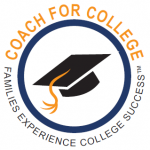“Income Shifting” Results in a “Tax Scholarship”
High Income families who will not qualify for “needs based financial aid” require advanced planning.
In fact, by starting when their children are young maximum results occur; “mother time” compounds the money efficiency for the planning efforts the family put forth.
First and foremost is a mind shift of focusing on income and asset strategies involving your child/future college student (“child”).
An effective strategy is to accumulate money to pay for future college costs by using the “tax capacity” of the child as a component of income shifting strategies.
The core of the strategy is the accumulation of funds for future college costs. Income-producing assets are positioned in the child’s name from either the parents or grandparents.
Certain approaches can also create considerable estate tax savings.
Our blueprint for shifting income provides these advantages;
- Tax benefits, present and future,
- Efficient and effective approach to accumulating college funds,
- Income advantages such as deferral until college years,
- Possible estate tax savings subject to the strategy implemented,
- Additional small business owner game plan for reducing taxes and increasing cash flow.
“Shifting Income” Designs for Wealthy Families
![]() Strategy Alert: Please note, these strategies are really for any family that is not being considered for “need based” financial aid.
Strategy Alert: Please note, these strategies are really for any family that is not being considered for “need based” financial aid.
“Gifts” and the “Child’s Tax Capacity” are the centerpiece in understanding these college planning approaches. Parents/Grandparents can gift appreciated assets or assets that produce income while growing the principle.
Secondly, the child becomes their own income production origin whereby they can pass the “support test”.
Let’s explore three arrangements where these designs can provide significant value to your family.
Use the Student’s Tax Capacity Erase $26,500 of Capital Gains Without Taxes
Appreciated and Marketable Assets
Generally we suggest gifts of up to $14,000 ($28,000 couple) appreciated assets such as stock. The timing of starting the gifting depends on family dynamics and the desire to control the asset as long as possible or not.
It’s important to recognize that with this event we are using a technique whereby the proceeds are reported using the “tax capacity” of the child.
![]() [Strategy Alert]For example, using the child’s tax capacity when they file their own income tax return and the American Opportunity Tax Credit, the child can absorb $26,500 of capital gains in 2015 without owing any tax! This includes the Kiddie Tax being assessed against the net capital gains after the child’s tax deductions. We include a detailed explanation of how this works inside our Coach-for-College coaching service when we discuss the importance of student positioning. The approach is different with families who will not qualify for needs based financial aid.
[Strategy Alert]For example, using the child’s tax capacity when they file their own income tax return and the American Opportunity Tax Credit, the child can absorb $26,500 of capital gains in 2015 without owing any tax! This includes the Kiddie Tax being assessed against the net capital gains after the child’s tax deductions. We include a detailed explanation of how this works inside our Coach-for-College coaching service when we discuss the importance of student positioning. The approach is different with families who will not qualify for needs based financial aid.
Please note that the child would have to pass the support test to use the personal exemption (earned and unearned income counts toward providing 1/2 support) but this should not be an issue as long as the child pays for half of their college costs.
This strategy is intended for families where they have no financial need (cost of attendance less expected family contribution is greater than the cost of attendance) capital gain realization will increase the family’s EFC number (assessed student income compared to parent asset).
Parents with no Appreciated Assets
Parents can move after-tax dollars to the child with annual gifts so the growth and accumulated earnings are taxed at the child’s rates rather than the parental rate.
Whereas income described below is not subject to kiddie tax asset earnings may be subject to “kiddie tax”. Unearned income such as interest, dividends and capital gains fall within the scope of kiddie tax.
![]() [Strategy Alert] Kiddie Tax: For 2015, the first $1,050 of unearned income is not subject to tax. The second $1,050 is subject to tax at the child’s rate. Unearned income above $2,100 is subject to kiddie tax and taxed at the parent/s rate. Please note there is a strategy that can avoid the kiddie tax.
[Strategy Alert] Kiddie Tax: For 2015, the first $1,050 of unearned income is not subject to tax. The second $1,050 is subject to tax at the child’s rate. Unearned income above $2,100 is subject to kiddie tax and taxed at the parent/s rate. Please note there is a strategy that can avoid the kiddie tax.
Child Earns Income which is not Subject to “Kiddie Tax”
There are several tax leveraging scenarios that energize this opportunity for affluent families.
- Eligible to contribute to an Individual Retirement Account (either Roth or regular IRAs), a best college funding source.
- “Earned Income” is not subject to “kiddie tax” like some other income shifting strategies resulting in unearned income.
- There is no Social Security tax if the child is under age 21 when employed by parents for household performed services.
- “Tax Capacity” engagement where the child can use their full single standard tax deduction ($6,310 for 2015).
- The child is eligible to claim education tax credits such as the American Opportunity Credit (up to $2,500 for 2015) since high parental income eliminates this tax credit (Single Filler Modified Adjusted Gross Income (“MAGI”) over $90,000 and Married Filing Jointly MAGI over $180,000).
Sole Proprietors and/or Husband-Wife Partnerships
Additional tax saving opportunities occur when they pay their children under age 18 for services performed on behalf of the business. There is no social security or self-employment liability [IRC Sec 3121(b) (A). The parent/s income tax bracket should be greater than the child’s bracket when implementing this income shifting plan.
Case Study: High Income Self Proprietor Business Owner $50,000+ Savings
A parent owns a qualifying business. The 12 year old child is hired to clean the business premises in addition to cutting grass. The child is paid a reasonable wage of $5,000 on an annual basis.
The parents are in a 42% tax bracket (35% federal and 7% state). The child’s taxable income would be “Zero” because the $5,000 in earned income is less than the child’s standard deduction for 2015 of $6,300. Remember since the child is under 18 there is no self-employment tax 15.3% due on the $5,000 of wages. Therefore the total family tax savings would be $2,865 (35% + 7% + 15.3% = 57.3%.
The child could save the $5,000 in wages in a qualifying tax deferred instrument (example Roth IRA) to use for college tuition. When Roth money is used for education qualifying expenses there is no 10% penalty. There are taxes due on the interest earned but the standard deduction and the child’s low tax bracket probably would result in minimal taxes if any.
An added benefit that may not be relevant is the Roth IRA does not count in the financial aid formulas’.
This is a powerful strategy at the end of 6 years when the child saves $30,000 by the time for college plus the compounding tax-deferred earnings over the 6 period.
In addition the parent business owner saves $17,190 using the above example assuming no changes during the 6 year period.
These are general assumptions each situation is different but the planning principle remains the same.
![]() [Strategy Alert] One of the best college planning strategies is “Hiring Your Children”. It is not only an outstanding tax planning strategy providing educational scholarships but also teaches them about business practices. Plus you can actually start at a very young age (7) so you can shift income for many years before college and during those years accumulate tax deferred earnings that can help cover college costs.
[Strategy Alert] One of the best college planning strategies is “Hiring Your Children”. It is not only an outstanding tax planning strategy providing educational scholarships but also teaches them about business practices. Plus you can actually start at a very young age (7) so you can shift income for many years before college and during those years accumulate tax deferred earnings that can help cover college costs.
There are certain procedural guidelines to follow when you hire your child.
Additional Advanced Planning Strategies
There are other possible planning strategies for the self-employed. Here are some in addition to hiring your child. There can be certain restrictions, certain reporting and documentation requirements that differ depending on the strategy.
- Hire Your Child (don’t have to be business owner)
- Education Assistance Plan (“EAP”) up to $5,250 business deduction tax free to child employee (age restriction).
- Gift / Sale / Leaseback of Business Equipment
- Health Savings Account
- Health Reimbursement Account
- Deduct Employee Child’s Care Expense
- Borrow Home Equity Deduct Interest as Business Expense
- Evaluate your Business Structure If You are a Pass Through Entity (profits pass to your return).
Families that choose to use the above strategies can still qualify for college grants (free money).
JimKuhner
 How to
How to